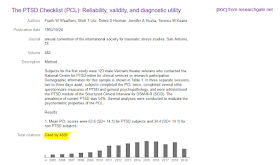Which is the worst outcome when you present a poster at a research conference?
The sample size was 944 votes, but Cody included a “Show me results!” option which I have removed in the table below.
| Fate | Percent | Votes |
|---|---|---|
| Ignored | 64.7% | 415 |
| Not being told about serious problems | 21.8% | 142 |
| Criticized to my face | 14.4% | 94 |
I am surprised that being ignored won students’ “worst outcome.” I wonder if this is because it may be the most common bad outcome, since many people have reported having no visitors to their poster at least once.
I was also surprised that getting criticized directly was the last choice. The only time I have gotten in trouble on the blog was from PIs who didn’t want their students to be criticized, because they thought it would be too soul-crushing to students. Hey, PIs: maybe your students are tougher than you think.
Hat tip to Dorothy Bishop.
• • • • •
Drew Steen has an entire Twitter thread of “bad on purpose” charts and graphs produced by his students. This one was voted the worst:
Hat tip to Holly Bik.
• • • • •
Now compare the “bad on purpose” plots in the thread above to the sincerely intentioned graphs collected by Jessica Tierney. Jessice has a great thread on the horrors of data visualization, using International Panel on Climate Change graphics. It introduced me to a term I hadn’t heard before: the “carpet plot.” An example is below. It almost has a Christmas-y feel.
I feel like we need a community conversation about visual communication. ... Ask yourself: 1) Do you need all that stuff? 2) Is this cognitively accessible? 3) Is this colorblind friendly? 4) #endrainbow 5) #endneon. If you wouldn’t decorate your living room with that color - why would you use it in a scientific plot (?)
Hat tip to Jarrett Byrnes.
• • • • •
Morgan Simon’s article is titled, “How to be a young woman (or anything other than a grey-haired white man) at a business conference and still get shit done,” but you could probably strike out “business” and replace it with “academic” and a lot of the advice would still apply.
- Have an objective.
- Your title doesn’t define you.
- Watch out for references that make people focus on your age, instead of your abilities.
- You already look different — so just be different.
- Learn how to make friends — not just network.
- Know when to hold them… and when to fold them.
- Build new centers of gravity.
• • • • •
I forgot to add this 3-D poster from a couple of months back.
Pictures by Nicole Ackermans. A “how to” post is waiting in the wings!
• • • • •
I think this is a first on the link round-up: an Instagram thread on posters! This come courtesy of Keighley Reisenauer. Here’s the first pic to get you started:
• • • • •
Kelsi Rutledge shows the benefits of working with professionals. To publicize her description of a new guitarfish species, she had a professional photographer get some fantastic images:
Not a poster, but I don’t care.
• • • • •
Back-to-back bookend podcasts! The BOOM (Biomechanics On Our Minds) podcast starts with navigating the conference experience.
The conference conversation continues on the Doctor You podcast, including best and worst conference experiences.
Hat tip to David Shiffman.
• • • • •
A reminder from Laura Bergalls:
“Don’t center long blocks of text.”
I’ve had to address this twice last week - with 2 different clients.
I might write a 500-1000 word article, and they’ll center justify the whole thing, making it extremely difficult to read.
PS - I hope this isn't some kind of new and kooky design trend. If so, it needs to fade, fast.
If you want to center a title or a caption, fine. But there’s a reason your newspaper left-justifies articles.
Readability. Accessibility.
Let’s nip this wannabe trend in the bud.
• • • • •
What do you do with all your conference lanyards? Anne Carpenter wants to know.
What’s the most fun reuse you’ve found for conference lanyards?
My daughters use them as leashes for their stuffed animals.
Hat tip to Justin Kiggins.
• • • • •
Pineapples and Whales have created A scientist’s guide to making presentations. Some of the advice applies to posters, too!
• • • • •
Roberto Keller has a nice Twitter thread showing how scientific figures used to be made.
Lines are inked using a ruling pen. Text is machine-printed, cut out, and glued. The curved dash line is glued into shape from a thin straight strip previously inked. This job was usually done by a professional who was a staff illustrator at the university.
Aren’t you glad you live in the future, where you don’t have to go through this rigamarole? Hat tip to Milton Tan.
• • • • •
And let’s end the month on a positive note from Melody Waring:
I’ve witnessed a beautiful academic moment. A senior academic asked my neighbor if she’s presenting. A grad student, she glanced down and said, “No, I just have a poster.” He leaned forward, warmly, sharing how critical posters have been to his work. Not “Just,” he says.













